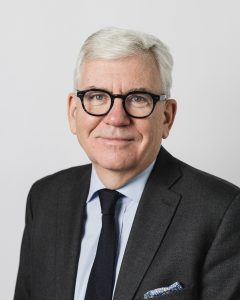Nothing reveals SWIFT’s European roots more than the fact that six decades after the first Sibos in Brussels, wine is still served to delegates at lunchtimes. Sure, JP Morgan accounts for over 26% of SWIFT messages, and it and other US banks have always been crucial in payments, but transaction banking is a field (perhaps only along with wealth management) where European banks continue to play in the premier league.
EMEA accounts for six of the ten constituents in Coalition’s transaction banking index. The question now is how can those banks defend those franchises in a radically different future – and we at Cognito spend some of our time thinking about how intelligent communications and marketing can contribute to that.
The EMEA transaction banking revenue pool is about the same as the US – the scale and complexity of cross border flows make this a relatively more important business in Europe than the US (whereas US investment banking revenues are double Europe’s).
European banks have slipped since the 1990s – PNC in Pittsburgh is now bigger by market cap than ING, Barclays, Deutsche or Crédit Agricole – but transaction banking and securities services have been a bulwark for the Europeans. And crucially nearly 60% of Europe’s payments revenue pool is corporate, versus just 35% in the more retail-driven US. The stickiness of that corporate transaction banking business has underpinned the franchise of several European banks even as they retreated in investment banking.
The rise of a more modern marketing department
The nature of transaction banking has meant that the marketing function has always been taken more seriously as a discipline than in investment banking, where until recently the word “marketing” often meant rainmakers knocking on doors. The stability of client relationships – corporate treasurers do long stints – was matched by long-established marketeers seeking to defend and enhance corporate transaction banking business by continual measurable innovation in marketing tactics and channels.
Perhaps connected to this, the trade media for transaction banking and securities services has also been quite resilient, compared to the decline of investment banking trade press.
Traditional event-based marketing has been powerfully reinforced in the last decade by thought leadership and highly targeted use of multiple channels. BNP Paribas has over 55,000 subscribers to its securities newsletter Quintessance. Unicredit brings opera singers to Sibos, Société Générale brings its artwork to its booth, and Deutsche has developed award-winning marketing programs.
But differentiation is hard. Some banks have pushed further by creating distinct sub-brands – partly to manage conflicts of interest, but perhaps also because their parent brands carried less weight outside home markets. Santander created PagoNxt as its payments arm , with some success, while BNP Paribas Securities Services has cultivated a distinct identity within the group.
Determining and pursuing value
Measurement of marketing impact in transaction banking is a challenge. Historically much measurement was around improvements over the previous year, or gains in share of voice, rather than in fundamental behavior change.
That world of Rolls-Royce transaction services marketing is facing radical disruption, as most of the leading marketers well know. New research suggests 20% of corporate/commercial clients now switch their primary deposit relationship each year – even though medium and large corporates still change banks much more slowly.
Pricing certainly matters, but the research suggests overall transaction banking experience remains more important than the latest hot product, with API adoption still slow. That can protect incumbent banks, particularly with large corporates – but not forever.
A new generation of treasurers wants the AI-powered personalization that they get in their personal lives. Particularly in SMB and smaller corporates, bank brand and reputation matter less than product features and pricing.
None of this is news to European banks or their transaction bank marketeers. Like SWIFT itself, there has been a lot of ongoing evolution and finetuning, even if it can sometimes feel like banks are fighting for market share on top of a very slowly melting glacier.
The higher rate environment has revived European banks share prices dramatically, after a lost decade. But when the investor presentations of European banks cover transaction services, what is striking is the extent of the focus on cost reduction, in order to get to the nirvana of “jaws” (cost in one direction, revenue in the other) mentioned in several earnings decks. That’s fine and much needed, but the challenge is to both reduce costs and invest on the scale needed for AI and tokenisation. The relative lack of either cross border or even in-market EU bank mergers has not helped with the scale needed.
Where more can be done
Great marketing creativity is certainly in evidence and more zero-based marketing budgeting undertaken than ever. Some areas where we believe there are more opportunities for rapid marketing innovation include:
- Event strategy: marketing budgets that change incrementally can mean priorities are backward-looking and higher growth areas (cross-border C2B, B2C, merchants) don’t get enough attention. Zero-base marketing activities at Sibos and other traditional events.
- Event tactics: Sibos activations are meticulously planned, but executives could do more individually – from asking sharper questions on panels to systematic LinkedIn posting, which the algorithm now demands.
- Substack: A new community of payments commentators is taking shape, but banks are largely absent from the conversation.
- Websites: Transaction banking pages are detailed but unwieldy, leaving content stranded.
- AI search: Generative Engine Optimisation is arriving here as elsewhere. Any senior Sibos delegate should know what AI currently surfaces about their bank on ISO20022 or T+1.
- Video: Talking head interview formats are growing scale; room for more narrative focused materials.
Andrew Marshall is Cognito’s MD Americas and vice chairman






